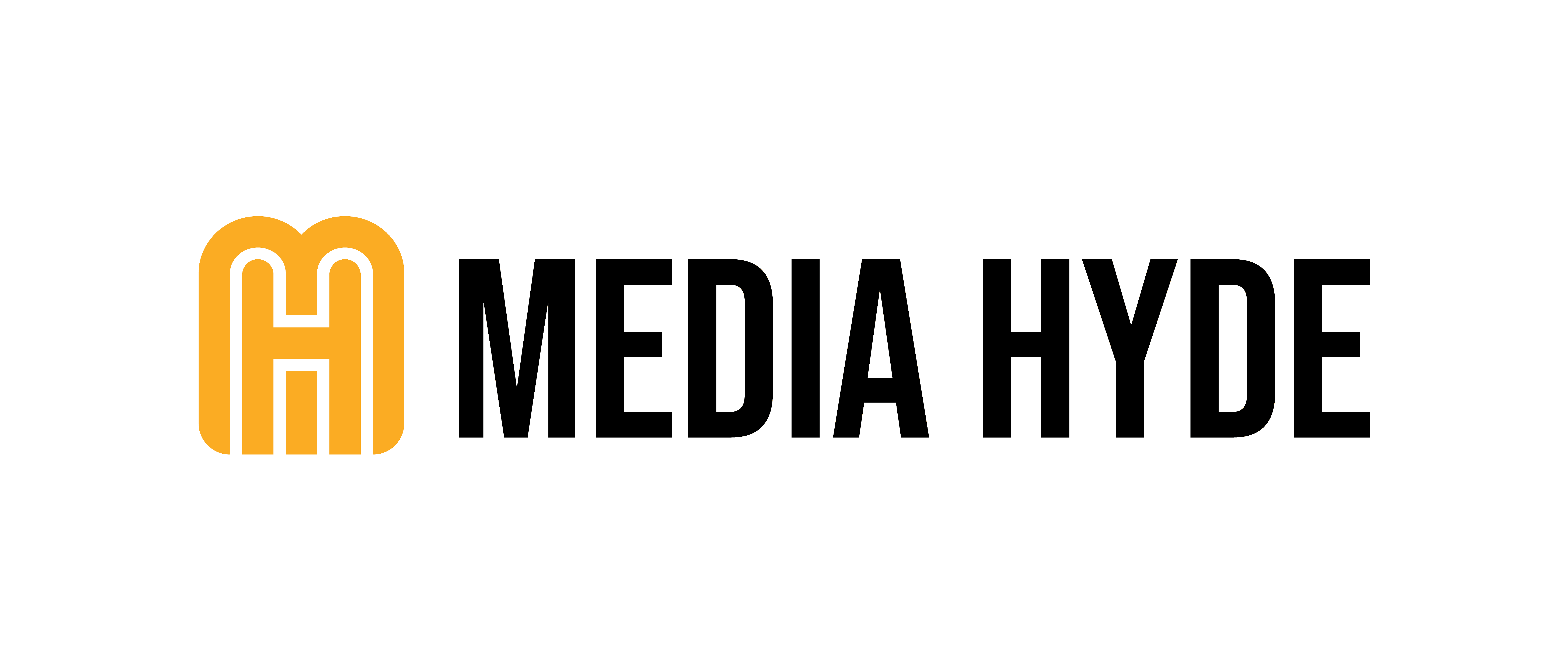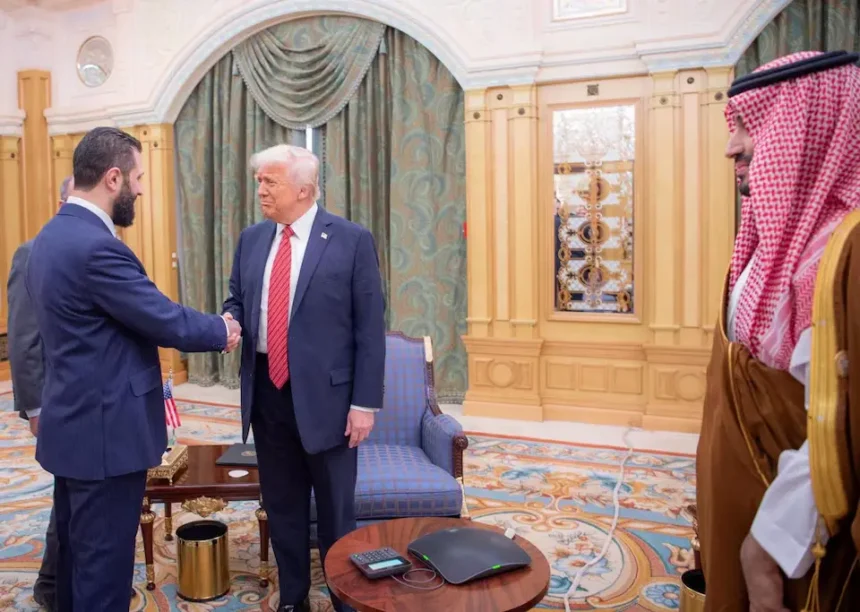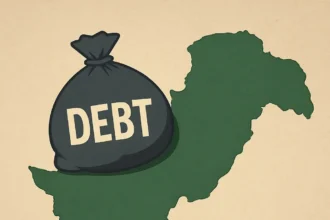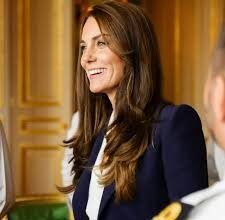In a significant shift in U.S. foreign policy, President Donald Trump met Syrian President Ahmed al-Sharaa on Wednesday during a summit with Gulf Arab nations held in the Saudi capital. The meeting marked the first high-level engagement between Washington and Damascus in over a decade and came after the U.S. administration unexpectedly announced the lifting of all sanctions on Syria.
The two leaders were seen shaking hands in the presence of Saudi Crown Prince Mohammed bin Salman, according to footage broadcast by Saudi state television. The meeting took place just hours before the formal opening of the U.S.-Gulf Cooperation Council (GCC) summit in Riyadh.
During the summit, President Trump stated that the United States was “exploring the possibility of normalising ties” with the Syrian government, a move that has stirred debate both domestically and internationally. According to a White House spokesperson, Trump also urged President Sharaa to consider the normalisation of Syria’s relations with Israel, although no concrete commitments were made on that front.
The announcement to lift sanctions was met with praise from Saudi Arabia and Turkey. Turkish President Recep Tayyip Erdoğan participated in the summit virtually and, along with Crown Prince Mohammed bin Salman, was reportedly instrumental in encouraging Trump’s decision. Saudi Arabia also pledged a substantial investment package totaling $600 billion in the U.S. economy and committed to purchasing $142 billion worth of American defense equipment.
However, the policy shift has drawn criticism, particularly from within the U.S. and Israeli governments. Critics point to Sharaa’s controversial past, including alleged ties to militant groups during the Syrian civil conflict. Though he formally cut ties with extremist factions in 2016, concerns remain, particularly in Israel, where officials have historically viewed him with suspicion.
Sharaa rose to power after the ousting of former President Bashar al-Assad in December. His government has struggled to regain full control over Syria, facing continued unrest in certain regions. In March, inter-factional violence erupted when Assad loyalists clashed with government forces, leading to retaliatory attacks that killed hundreds of civilians, especially from Syria’s Alawite minority. The violence was strongly condemned by the United States.
Trump’s Middle East tour, which spans four days, also includes high-profile meetings in Doha and Abu Dhabi. In Doha, he is expected to meet with Emir Sheikh Tamim bin Hamad al-Thani. Qatar is anticipated to announce major investment initiatives in the United States, including a potential deal involving the purchase of around 100 Boeing widebody jets by Qatar Airways.
In a separate development, the White House confirmed that Qatar has offered a Boeing 747-8 aircraft—customized to serve as Air Force One—as a gift to the United States. The aircraft is slated for eventual display at Trump’s presidential library. The gesture has sparked bipartisan concern in Washington, with lawmakers warning of the perception of impropriety.
Following the Qatar visit, Trump is scheduled to travel to the United Arab Emirates before potentially heading to Turkey for a proposed trilateral meeting involving Russian President Vladimir Putin and Ukrainian President Volodymyr Zelenskiy. The meeting, however, remains unconfirmed.
This evolving diplomatic outreach signals a dramatic reorientation of U.S. policy in the Middle East, particularly regarding long-isolated regimes such as Syria’s. Whether this engagement leads to sustained peace and regional cooperation remains to be seen.














